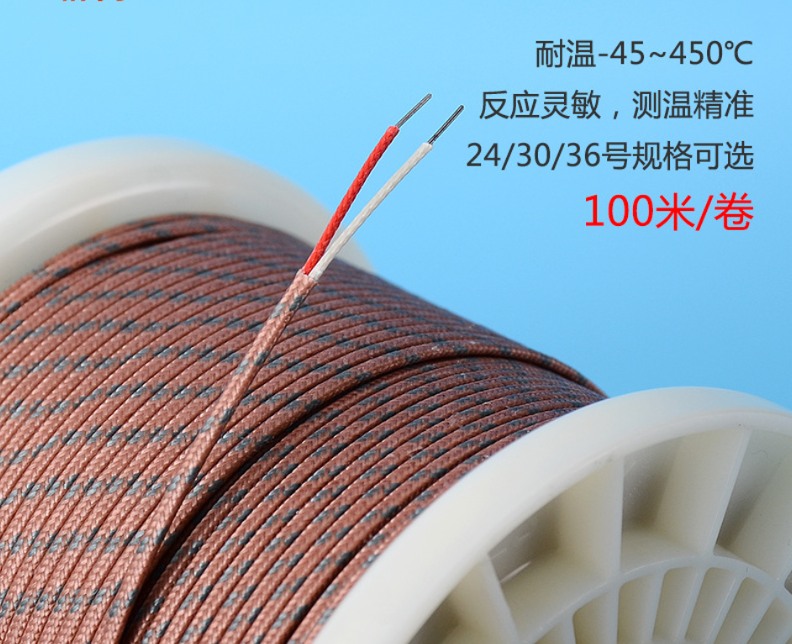当涉足温度测量领域时, 热电偶是可靠的战士, 将热量转化为可测量的电信号. But within this domain lies a crucial choice: thermocouple grade wire versus extension grade wire. Both seem similar, yet their differences significantly impact your measurement accuracy and application suitability. This guide dissects these two options, empowering you to choose the champion for your specific temperature battle.
Unearthing the Core:
Both thermocouple and extension grade wires are composed of two dissimilar conductors, each with its own color coding. This color code serves two purposes:
- Identifying individual conductors: Distinguishing the positive and negative legs of the thermocouple.
- Thermocouple type indication: Different thermocouple types (e.g., K, J, T) have unique color combinations, helping you identify the type you’re dealing with.
However, the key difference lies in their intended use and construction quality.
Thermocouple Grade Wire: The Forerunner in the Heat
This champion is built to withstand the fiery heart of the measurement. Designed for use within the actual thermocouple probe, where the temperature changes occur, it boasts:
- High-quality materials: Precisely formulated alloys adhering to strict standards ensure accurate and consistent voltage output over its specified temperature range.
- Strict tolerances: Manufacturing processes ensure minimal inconsistencies in wire diameter and composition, minimizing measurement errors.
- High-temperature insulation: Robust insulation materials protect the conductors from heat, ensuring reliable performance even in harsh environments.
- Durability: Built to withstand physical stress and harsh conditions that might be encountered at the measurement point.
Extension Grade Wire: The Reliable Messenger
This workhorse isn’t meant for the fiery heart, but for carrying the message over longer distances. Used to connect the thermocouple probe to the measuring instrument, it offers:
- Cost-effectiveness: Made with less stringent tolerances and less expensive materials, it’s ideal for extending the reach of the measurement without breaking the bank.
- Lower temperature rating: While it can handle moderate temperatures, it’s not designed for the extreme heat the thermocouple probe experiences.
- Simpler insulation: While still insulated, the materials and thickness might not be as robust as thermocouple grade wire, making it suitable for less demanding environments.
- Flexibility: Often more flexible than thermocouple grade wire, allowing for easier installation in tight spaces.
Choosing Your Champion:
The ideal choice hinges on your specific application:
- High-accuracy, high-temperature measurements: Thermocouple grade wire is the undisputed champion. Its precision and durability ensure reliable readings even in harsh environments.
- Cost-effective extension over moderate distances: Extension grade wire shines here. Its affordability and flexibility make it ideal for connecting probes to instruments without compromising accuracy.
超越基础:
While the core differences are clear, remember:
- Temperature range: Both grades have specific temperature limitations. Choose the one exceeding your expected measurement range.
- Color coding: While both adhere to color code standards, ensure you reference the correct standard (e.g., IEC or ANSI) for accurate interpretation.
- Compatibility: Always check if the extension grade wire is compatible with the thermocouple type you’re using.
- Safety: Prioritize safety by using appropriate insulation and avoiding exceeding the wire’s temperature rating.
结论:
Thermocouple and extension grade wires, though seemingly similar, cater to distinct roles. By understanding their strengths and limitations, you can confidently choose the right tool for your temperature measurement journey. Remember, the ideal champion lies in accurately reflecting your application’s needs. So, arm yourself with knowledge, choose wisely, and conquer the temperature measurement battlefield!
